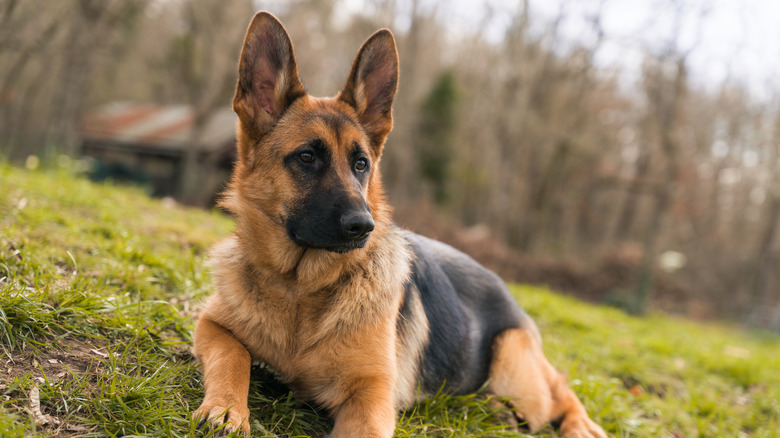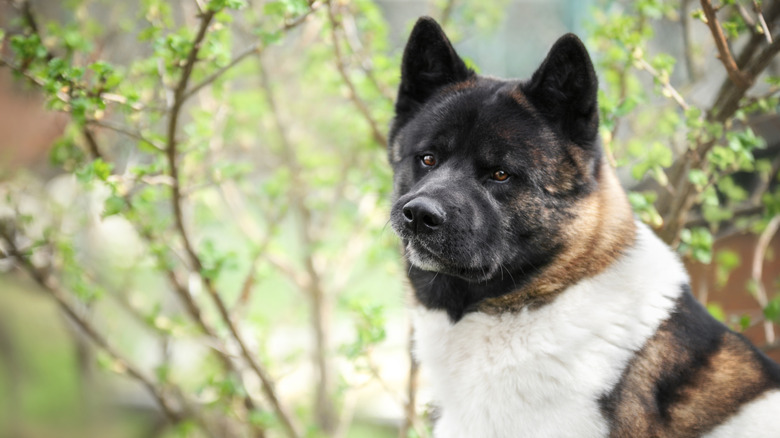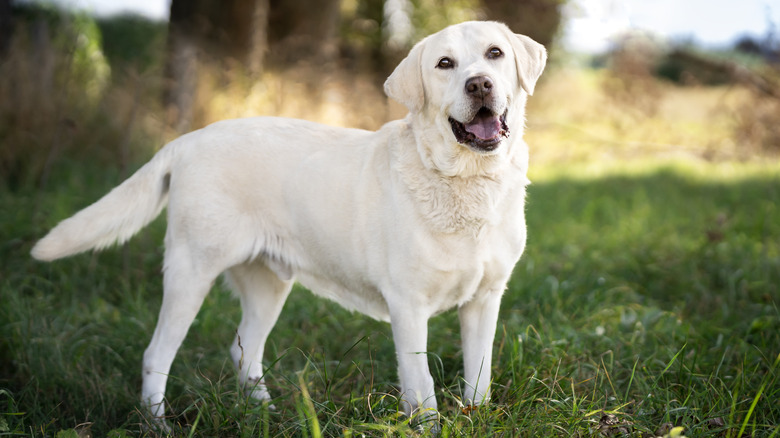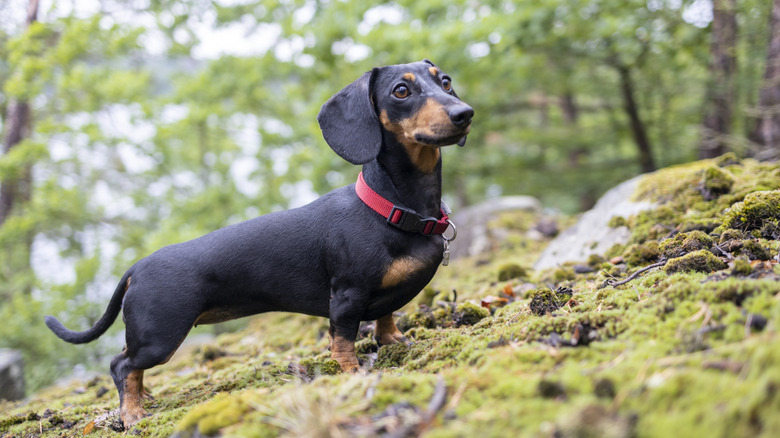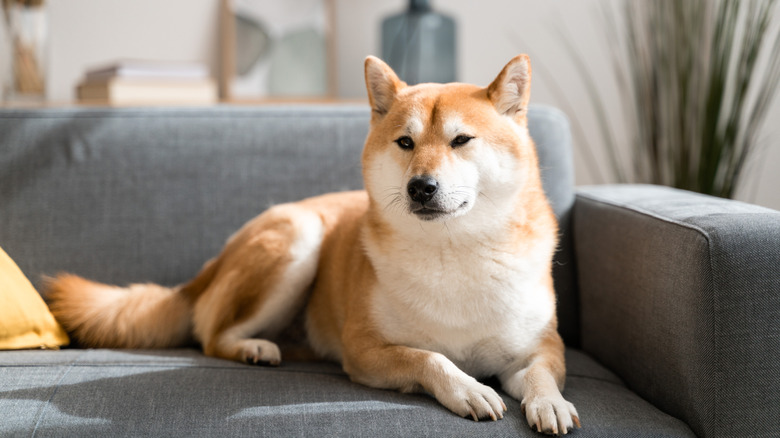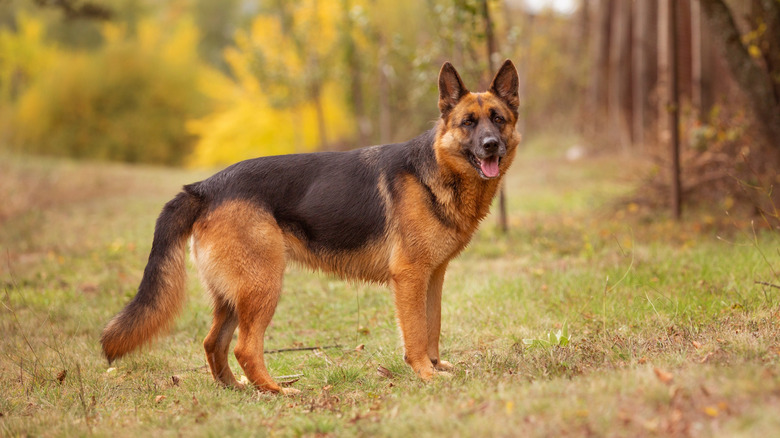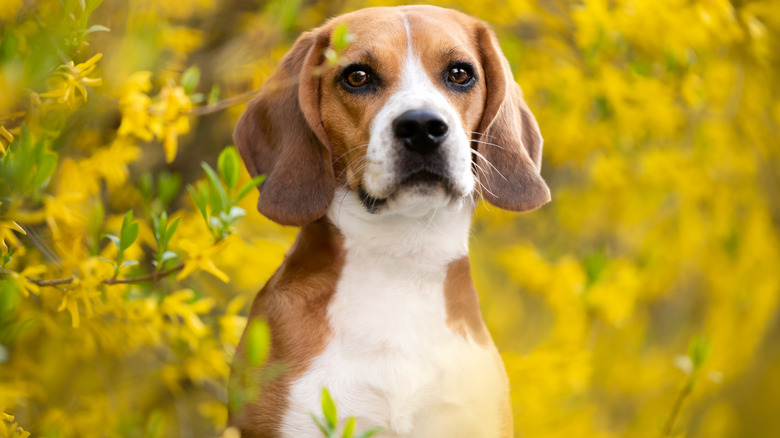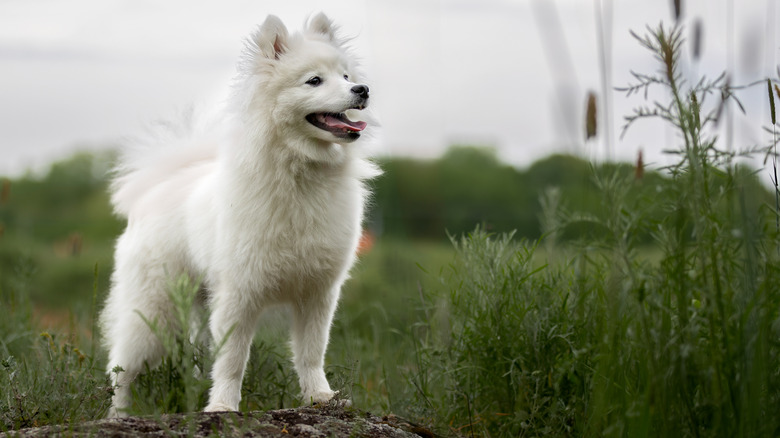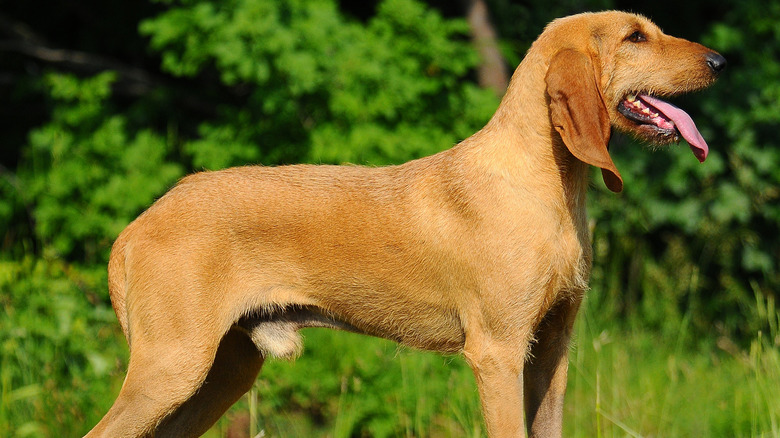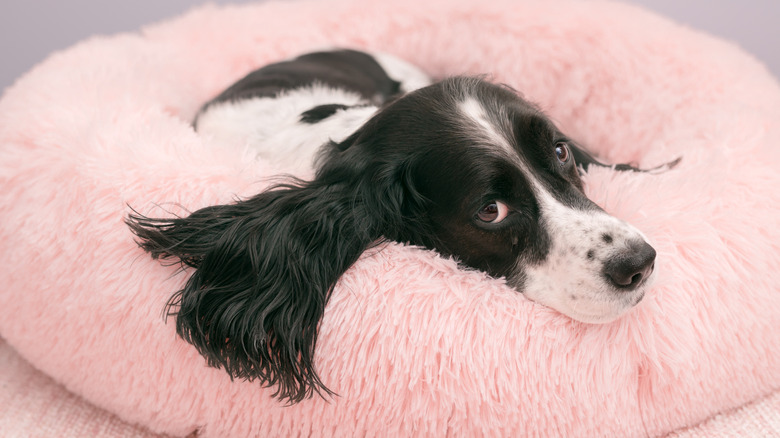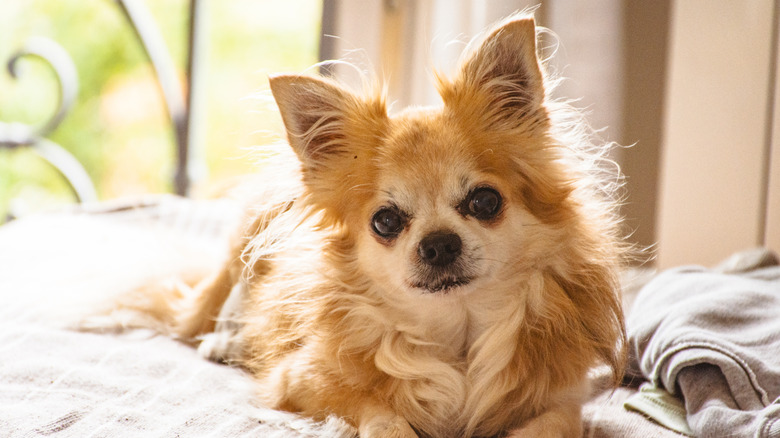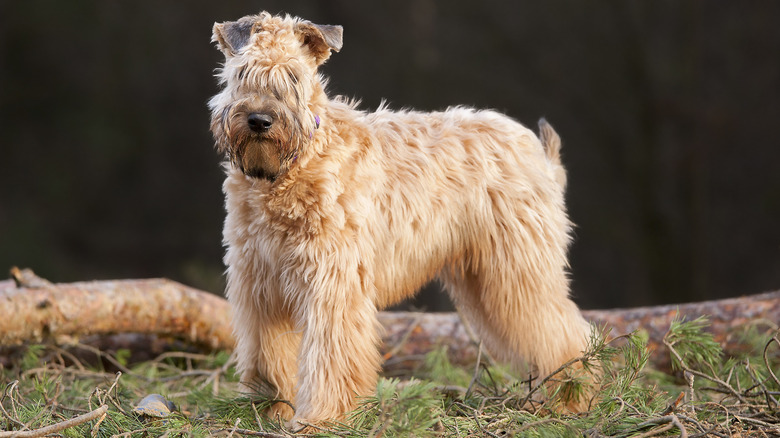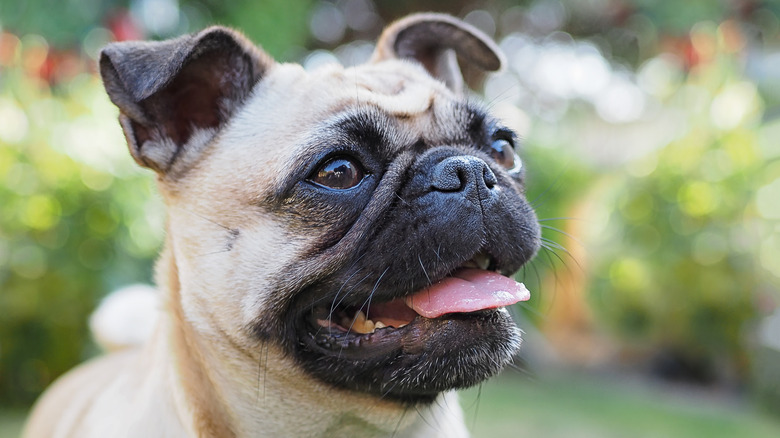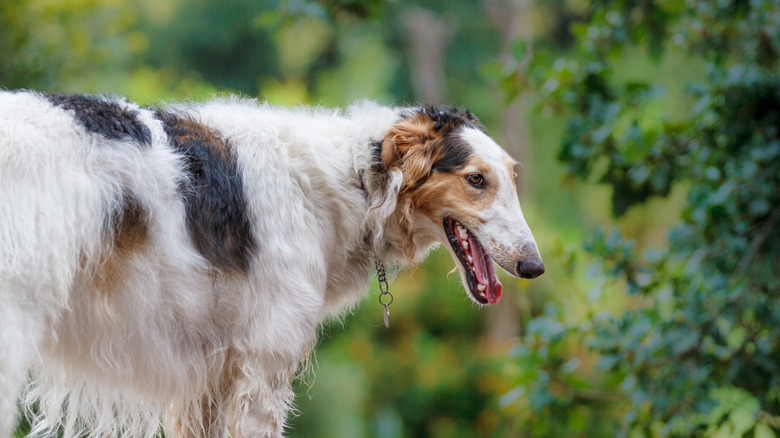The 14 Most Loyal Dog Breeds That Won't Leave Your Side
If you're looking for a loyal dog breed, it's important to first define the term. Loyalty can present in different ways, from unwavering affection to an intense desire to protect the household. Once you've nailed down what it means to be "loyal" to you, you can narrow down your search for a breed that meets your expectations and lifestyle.
Are you looking for a bold canine that will put its life on the line for your family? In that case, you may enjoy having a German shepherd, a confident dog instilled with an unwavering sense of responsibility. Maybe you're looking for a "Velcro dog," a spirited companion that will follow you from room to room, never missing a beat. If so, get a pug, a mischievous dog that will remain glued to your side.
Note that a dog's personality and temperament ultimately boil down to its individual disposition, not its breed, and there are countless mixed-breed mutts that would make great bouncers or buddies. That said, from faithful companions to bodyguards, here are some of the most loyal breeds that won't leave your side (well, except maybe to bark at the front door).
1. Akitas are culturally known for their loyalty
At first glance, akitas seem like your standard large spitz dog, sporting a muscular build and sickle tail curled over its back. However, these dogs' loyalty is legendary in their native country of Japan. One of the reasons lies in a bittersweet story centered around an akita named Hachikō and his owner, Hidesaburō Ueno, a professor at what is today known as the University of Tokyo.
The pair shared such a close bond that Hachikō would wait every day for his master at the train station when he came home from the university. Unfortunately, just 16 months into their friendship, Ueno suffered a fatal brain hemorrhage and never came home. For the next decade, Hachikō did everything possible to return to the train station and wait for his deceased owner, not knowing that he'd never return.
Fast forward about 100 years later, and Hachikō's loyalty is still commended. There is a bronze statue of the dog outside Tokyo's Shibuya Station, showcasing the akita's unwavering loyalty to its owners, even in death. Breed enthusiasts describe this dog as courageous, confident, and profoundly loyal, almost to a fault. Akitas are extremely wary of strangers and aren't recommended for households with multiple animals. This is one of many breeds that must be intensively socialized from the time it's born to avoid reactivity and behavioral issues.
2. Labrador retrievers were bred to bond
Some working dogs were bred to operate independently of their owners, relying on their own judgment to protect livestock, retrieve game, and startle birds into flight. The Labrador retriever is not one of these breeds. Known today as goofy family dogs, these canines have roots dating back to the 1800s, when they were bred to work closely with fishermen off the coast of Newfoundland. These dogs were so renowned for their loyalty that they even caught the eye of British noblemen who brought the breed back to England and worked further to refine this trait.
There's a reason why Labrador retrievers were the American Kennel Club's (AKC) most popular breed for 31 consecutive years: They get 10s across the board when it comes to their affection with family members, love for children, and ability to peacefully coexist with other dogs. Labrador retrievers want nothing more than to be considered part of the human pack — and nothing more than to enjoy a swim or romp in the park.
3. Chow chows have tight inner circles
To be loyal means to have some level of exclusivity. After all, if a dog was loyal to everyone it met, the term wouldn't carry much weight. When it comes to bonding closely with one person, the chow chow takes loyalty to a different level. These aloof, standoffish dogs will need repeat interactions before it even considers letting a person into its inner circle. Dignified yet independent, chow chows might not curl up on the couch demanding cuddles, but they'll certainly keep a close watch for intruders (and squirrels that come too close).
But why are chow chows so unwaveringly loyal? These dogs have received the star treatment for thousands of years. These dogs were kept by Chinese emperors, dating back to 7th century A.D. It was rumored that one emperor kept more than 2,000 chow chows, using them as hunting dogs and companions on outdoor expeditions. Their popularity soared again in the 1920s, when they became prized among movie stars. Needless to say, encouraged by its pampered past, a chow chow takes its friendships seriously.
4. Dachshunds: loyal by easily jealous
Dachshunds have long been cherished for their spunky attitudes and mischievous antics. They first appeared around 1700, bred to dive headfirst into badger dens and drive out the sharp-clawed occupants (hence its name in German meaning "badger dog"). During the breed's formative years, these dogs learned to rely on their owners for protection, direction, and everything in between. In turn, these traits were passed down to their puppies, creating the devoted low-slung canine we know and love today.
If there's one thing to know about dachshunds, it's that they take their familial ties seriously — sometimes crossing the boundary into resource guarding. This is when an insecure dog displays aggression or reactivity in response to protecting a particular item, which can even include its owners. As such, a dachshund may lunge, snap, or even bite people who come too close to its owners. While this may initially seem amusing, it can quickly spiral into separation anxiety and other issues surrounding its owners' absence. You can curb resource guarding and separation anxiety in your dachshund by employing positive reinforcement, a training modality that involves associating a desired behavior with a reward. You may also consider working with a licensed trainer who can offer further insight into molding your dog's responses.
5. Shiba inus are intelligent and affectionate companions
Shiba inus are Japan's most popular companion dog — and for good reason. Not only are these fox-like dogs extremely adaptable, but they're also known for the unbreakable bonds they share with their owners. These attentive dogs will follow you from room to room, eager to be included in your day-to-day activities. While not necessarily aggressive, shiba inus are prone to being growly, warding off other dogs that may threaten their place in your heart.
Like many dog breeds, the shiba inu's loyalty stems from its careful breeding more than 700 years ago in the rugged mountains of Japan. Here, they served as trusted hunting dogs, working alongside their owners to capture small game (and even the occasional wild boar!). Today, these dogs, which make some pretty relatable memes, have relocated from the hunting fields to people's homes, where they make wonderful additions to cozy apartments and sprawling mansions alike. With a shiba inu, you'll never be alone again. Expect to have them outside the bathroom door constantly!
6. German shepherds are devoted family members
Is there any dog more loyal than the majestic German shepherd? These dogs are an international symbol of protection, confidence, and unshakeable familial bonds. The reason for the dog's loyalty is fairly straightforward; years of selective breeding aimed to create the perfect working dog, one that was loyal, smart, and eager to take direction. This ambitious project first started in 1899 when military officer Max Emil Friedrich von Stephanitz sought to create a well-rounded, responsive breed.
Over the years, he and other breed enthusiasts would selectively breed wolf-like dogs and other native German breeds to create the German shepherd we know and love today. During this rigorous breeding process, von Stephanitz prioritized dogs that were biddable, fast learners, and possessed certain physical characteristics. The endeavor was an extraordinary success; not only do German shepherds rank as one of the most popular dog breeds, but their invaluable loyalty also makes them excellent in their roles as police and military dogs.
7. Beagles are loyal pack animals
Beagles were historically used as hunting dogs, and you couldn't have just one. There really was something to the adage "the more the merrier" when it came to owning these medium-sized, prey-driven scent hounds. Working alongside others in a pack while hunting worked to shape the beagle into a dog with strong loyalty to both its human and canine families. With a reputation for being gentle with children and friendly with other dogs, these dogs have solidified their place as one of the top ten most popular dog breeds in the U.S. Their affable nature has even given rise to fictional beagles in popular media, such as Snoopy from "Peanuts" and Gromit from "Wallace & Gromit" (yes, he's a beagle).
What can you expect upon bringing home a beagle? For starters, there will be no shortage of laughs; beagles have an overpowering sense of smell, which can get them into trouble! Avoid keeping food on the counter's edge, and keep the lid on the trash can to prevent late-night foraging. Training beagles takes some time and patience, as they can be easily distracted and prove strong-willed. Still, with consistency and a gentle hand, you'll find yourself with a trustworthy, obedient dog that wants nothing more than to revel in your love.
8. Japanese spitzes are faithful jokesters
Some dog breeds demonstrate their loyalty by protecting the household. Others cling to their owners' side. But the Japanese spitz has a unique way of showing affection: being the center of attention. These small, double-coated dogs are often lovingly known as jokesters by breed enthusiasts, and they thrive off attention and laughter.
The Japanese spitz is a somewhat new breed, originating in the 1920s from the keeshond (a type of Norwegian dog) and German spitz. From the get-go, they were bred as companion dogs. Rather than herd livestock or retrieve game, Japanese spitzes had one purpose: bond closely with their families. These dogs are gentle with children and thrive in households with multiple dogs.
Take note that while the Japanese spitz remains steadfast to its family, this friendly little dog views strangers as potential friends, eagerly bounding up to anyone who makes eye contact. Yet, there's a difference between friends and family. While social, these dogs' hearts remain firmly planted in the home.
9. The Segugio Italiano is an adaptable watchdog
The Segugio Italiano is a medium-sized scent hound defined by its intense eagerness to please its owners. These dogs quickly identify and mold to their owners' expectations, whether that means living in a small apartment or spending hours running outside. Well-mannered but bold, Segugio Italianos (sometimes called Segits for short) suit people of all ages, and they take their job of protecting the household seriously. Still, unlike other watchdog breeds, they're not aggressive but will alert their owners to strangers with a deep, baying bark.
If you're looking to acquire a Segit, you may have to search for a breeder outside of the U.S. These dogs aren't exactly popular in North America, meaning you may have to source one from its native Italy. Although many people are successfully able to acquire purebred dogs from other countries, it's vital that you educate yourself on unscrupulous breeding practices beforehand. You want to only do business with reputable breed enthusiasts who conduct responsible genetic testing and screen buyers beforehand. This ensures that you acquire a healthy dog at a fair price.
10. English springer spaniels adore their owners
Picture this: It's the 17th century, and you wake up early in the morning, grab your rifle, and head out into the field with your English springer spaniel. All day, you work together to startle and shoot birds, working as extensions of one another until the sun sets. At home, your cherished hunting dog, with its long history and cute characteristics, curls up by your feet and even sleeps in your bed at night to keep you warm. It's an amazing portrait of human-dog relationships.
This snapshot was a familiar experience for many people who owned English springer spaniels around the breed's inception in the 1600s. Through generations of selectively breeding the most affectionate yet driven dogs, the English springer spaniel evolved into a friendly, obedient canine beloved for its deep familial ties. These dogs are very eager to please and make willing students when learning both basic and advanced commands. They despair when left out of activities or remain isolated for long periods. Your springer spaniel wants to be part of the pack!
11. Chihuahuas make steadfast companions
Hey, if you were 9 inches tall, wouldn't you bond closely to the giant who fed and took care of you? Such is the reality for Chihuahuas, the smallest breed that has unfortunately earned a reputation for having "little dog syndrome." But make no mistake: Behind that sassy personality is a tender-hearted pup that's deeply loyal to its family. Chihuahuas demonstrate this bond by barking at perceived threats, following their owners from room to room, and guarding their favorite lap.
The Chihuahua's loyalty goes beyond its connection to humans; these dogs are even remarkably loyal to other Chihuahuas, preferring their own breed to others. In fact, Chihuahuas can form lifelong friendships with one another — and that's nothing to take lightly, considering these dogs can easily pass the 14-year mark. The oldest living Chihuahua is a 23-year-old pooch named Spike, who was briefly the world's oldest living dog until he was unseated by Bobi, a 30-year-old Rafeiro do Alentejo, according to CNN. (Read here to learn about the longest living dog breeds.)
12. Soft-coated wheaten terriers are devoted almost to a fault
The soft-coated wheaten terrier is exactly what it sounds like: a feisty plush-to-the-touch terrier. Hailing from Ireland, these low-shedding canines have long been versatile working dogs, serving as ratters, livestock guardians, and herders. Because of its long history of working alongside humans, the breed has developed a reputation for its deep, unyielding devotion, which, in some cases, can serve as risk factors.
According to a 2020 study published in Scientific Reports, out of 13,700 dogs studied, researchers found that mixed-breed dogs and soft-coated wheaten terriers were more likely to demonstrate "separation related behavior" than others studied. This phrase referred to a range of behaviors stemming from anxiety, from excessive barking to destructive habits. Soft-coated wheaten terriers also emerged as one of the breeds most likely to suffer anxiety overall. So, what does this mean for potential owners of these fine-haired dogs? It takes time and a concentrated effort to combat separation anxiety. Using consistency, positive reinforcement, and lots of patience, you can build your dog's confidence and address the root cause of its uncertainty.
13. Pugs: loyal royal dogs
Whereas some breeds have rags-to-riches origin stories, pugs were destined for life's finer things from the very beginning. The earliest record of pugs comes from 400 B.C., when they were the beloved companions of Tibetan monks. Fast forward a few hundred years, and pugs found themselves as lap dogs for the Chinese ruling class.
Being deemed the "top dog" from the breed's inception instilled a sense of trust and loyalty in future pug generations. There's even a story that showcases the pug's dedication to its owners. In 1572, the Danish Prince William of Orange led a campaign against the Spanish. During the night, he slept with his beloved pug, Pompey. One night, intruders sought to assassinate Prince William in his tent. However, the ever-vigilant Pompey began barking and even scratching at his master's face until he awakened. The assassination plot was unsuccessful, and as a result, the pug became the House of Orange's official mascot.
14. Borzoi are dedicated dogs
If you ever encounter a borzoi (sometimes called the Russian wolfhound), you may be struck by its wiry frame, elongated snout, and fine, silky locks. Yet, while you may be tempted to stroke its "snoot," borzoi only have eyes for one person: their primary owner. Even others in the household may find themselves alienated by these large, often-aloof sighthounds. As with many dog breeds known for their steadfast natures, borzoi were bred by Russian aristocrats to partake in extravagant festivals that would involve mock hunting expeditions, horseback riding, and grand feasts.
During these affairs, the borzoi was an independent, dignified dog that would only heed its master's call. Today, borzoi owners find themselves in similarly lordly positions; their borzoi dutifully respond when they call but may ignore others' commands. While not overly affectionate (and even considered cat-like by some), borzoi demonstrate their love with brief cuddle sessions and taking a disaffected interest in your daily routine. The borzoi might not raise alarm bells when you come home from work, but it will snooze at your feet when you watch TV.
Now, read up on the 20 mind-blowing crossbreed dogs that prove how cute mutts really are.
